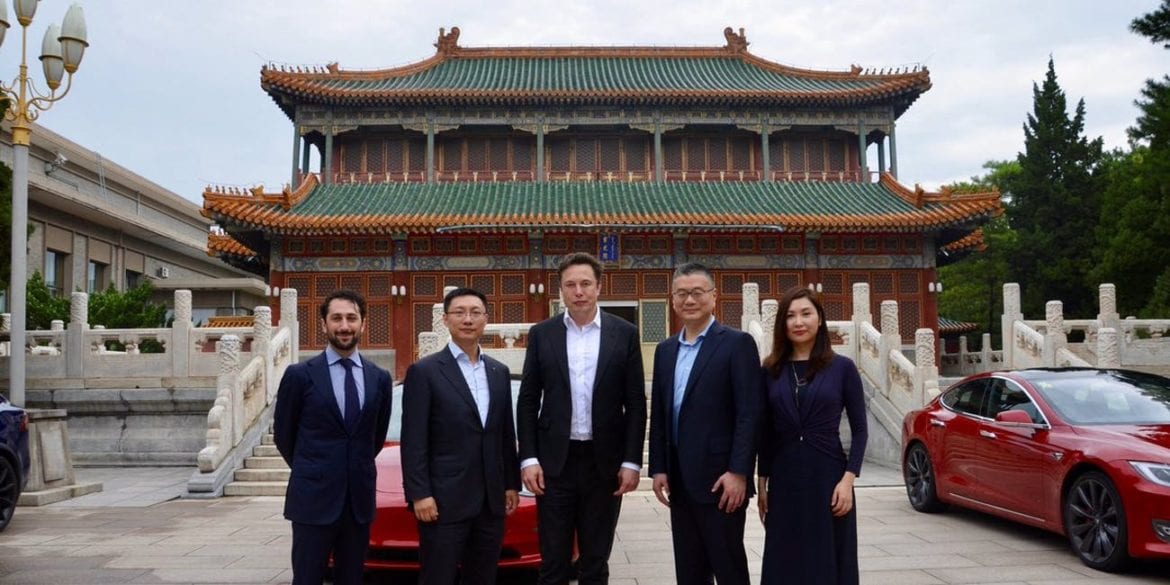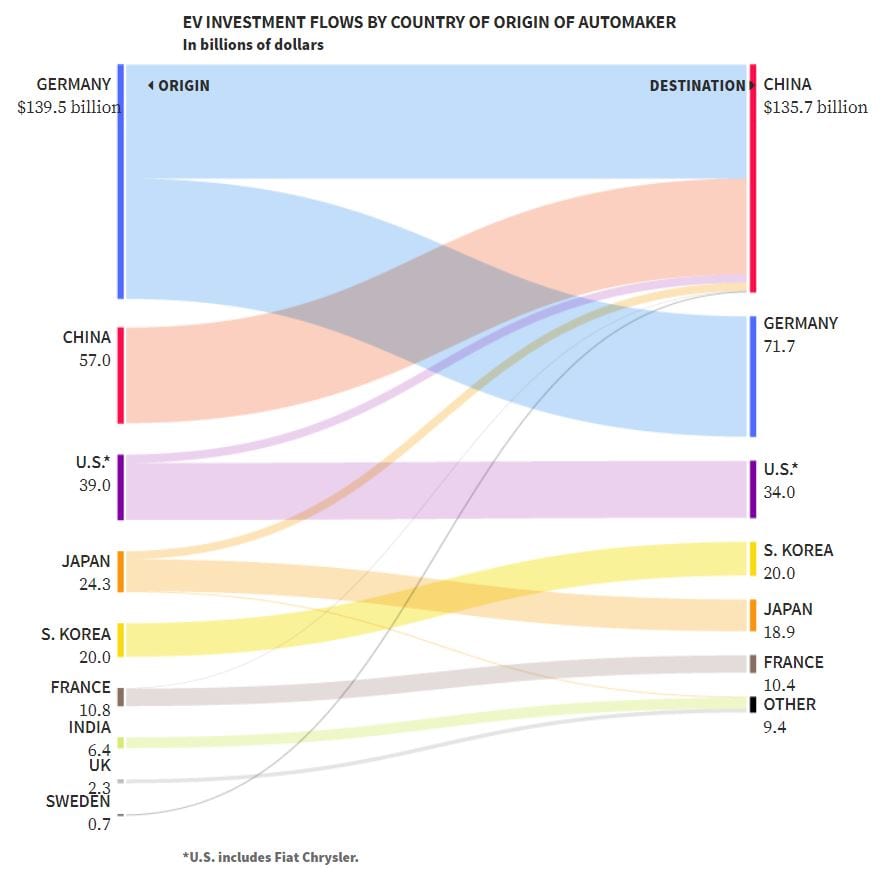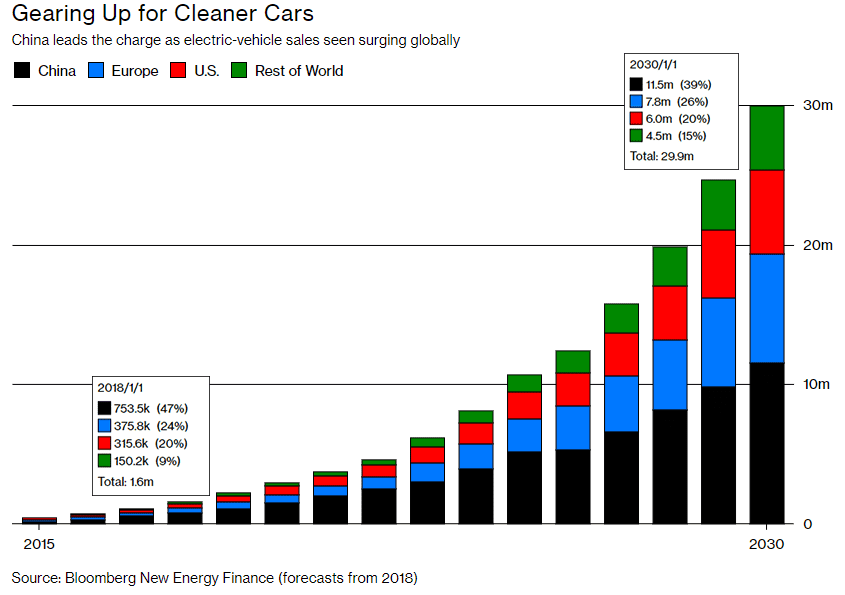Tesla’s new factory in Shanghai, China, dubbed “Gigafactory 3”, has recently broken ground and construction has stated post-haste. So what do we know about it so far, and why does it exist?
Just as a refresher, let’s look at the current factories that Tesla operates:
- Tesla Factory: Located in Freemont, California, this factory is responsible for manufacturing all of Tesla’s current vehicles and their components, minus the battery packs. It currently has 5.3 million square feet of manufacturing and office space, but has plans to double to almost 10 million square feet.
- Gigafactory 1: Located outside Reno, Nevada, the factory is responsible for producing all of Tesla’s power products, such as the battery packs for the vehicles, Powerwalls, Powerpacks, and additionally the Model 3’s powertrain. Currently it’s in a constant state of expansion with only 30% of it being done. Currently it is 1.9 million square feet, and houses more than 4.9 million square feet of operational space across several floors.
- Gigafactory 2: Located in Buffalo New York, this is the least talked about factory as it is the most removed from Tesla’s cars. Instead, the 1.2 million square-foot facility is operated by Tesla’s SolarCity division and produces solar panels as well as energy storage products such the Powerwall and Powerpack.
- Tilburg Assembly Plant: Located in Tilburg, Netherlands, and while not technically a manufacturing plant, it does serve as the final assembly point (the battery pack and powertrain are shipped separately) for Teslas that are destined for the European market.
So what will the new Gigafactory 3 be used for?
Well since it has the ‘Gigafactory’ moniker, the 9.3 million square-foot plot of land will have to house a factory that produces at the very least a GWh of batteries annually. More importantly thought, it will be a major manufacturing site for the new Model Y and will additionally produce Model 3s. The factory will have an initial production capacity of 250,000 vehicle a year, but will eventually have a capacity of 500,000 vehicles a year once completely finished. The factory will seem to follow the principles of Gigafactory 1 and be built in such a way that it does not have to be completely finished for production to start.
So why build a new factory?
Well first and foremost, if Tesla wants to continue to increase the number of vehicles they produce each year, they cannot do it from one factory alone. For instance, Volkswagen’s Wolfsburg plant, which is the largest manufacturing plant in the world at 70 million square feet which is almost 14 times larger than the factory in Fremont, only produced 850,000 cars in 2015. Even if we give Tesla the benefit of the doubt and have them produce 10,000 cars a week, that’s 520,000 cars annually, which doesn’t even land them in the top 20 in terms of annual car sales by manufacturer.
As such if they wish to grow, they need to have at the very least another factory. If you look at the number of factories that other manufacturers have, you can see how lopsided the comparison is (admittedly, many of these factories are not as big or have as many employees as the Tesla Factory, but the sheer number of them make up for that fact in my opinion):
- Ford: 71
- Mercedes-Benz: 30
- BMW: 27
So while I’m not suggesting that Tesla should start raining cash they do not have on 20 new factories, I do agree that adding one new factory to the list is not a bad move, for more reasons than just the increased production numbers.
So why build it in China?
Tariffs. And other reasons, but tariffs are the first thing I am going to cover. While tariffs are more so a tool used to help encourage domestic production by taxing imported goods, they can very easily be thrown around in a politically charged manner. If you have been following the trade-war between the United States and China, you know that the automotive industry is one of sectors caught in the middle of it.
To make a long story short: in July 2018, China decreased their foreign-car tariff from 25% to 15%. However days later, China increased the tariff for specifically American-made cars from 15% to 40%, causing American automakers like Tesla to increase their prices drastically. As for the time being the tariff has decreased from 40% to the original 15% for a span of 3 months starting from January 1, 2019. After that, who knows what happens.
So why would Tesla, or any other automaker want to deal with a regulation that could easily shut it out of a huge market? There is a reason many automakers such as BMW, Mercedes, and Volkswagen have been planning additional factories within China.
So how important is the Chinese market? So huge that all these automakers are investing billions of dollars to build new facilities within China and create Chinese-specific cars.
China is responsible for a huge share of the entire EV market currently and is projected to continue to take a huge share of the EV market for the foreseeable future.
With a larger variety of cheap EVs within the Chinese borders, the (hopefully) affordable Model Y and the (hopefully eventual) standard-range Model 3 will be the perfect cars to build locally in China.
The Chinese government itself seems to be very eager to have the new factory built. Reports have stated that many local banks were competing with one another to give Tesla loans. Additionally the building of the factory will be handled by China Construction Third Engineering Bureau Co.,Ltd, which is a subsidiary of China State Construction Engineering, a state owned construction company that is the largest construction company in the world based on revenue.
When Elon Musk met with Chinese Premier Li Keqiang to discuss the expectations of the factory and the government, Keqiang had offered Musk a “China Green Card” to help realize these ideals Musk has in China.
Overall it seems like an awfully eager response to a foreign automaker planting a factory within your borders, but it seems like Tesla has the full banking of the Chinese government to make this factory work.
Work has already commenced for the new factory, as you can see from this drone shot from January 17, 2019.
So to recap, the new Gigafactory 3 allow Tesla to: expand its total production capacity, have closer access to the largest EV market in the world, and allow itself to access the market without having to deal with automotive tariffs. Additionally it seems to have quite a strong backing from the Chinese government itself.
Obviously there are possible caveats to the building of Gigafactory 3. Namely if something goes wrong during construction or the Model Y and Model 3 don’t sell well enough to help recoup to costs of building the new factory. Obviously I do not have a crystal ball and can’t predict if either of those things will happen, so we’ll have to wait and see.
Depending on how smoothly this goes, we see a Gigafactory 4 start to emerge somewhere in the European continent for maximum coverage for Tesla. However nothing official has been made with that thus far.


